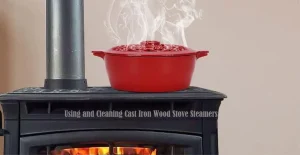Using Wallpaper Steamer: Pros and Cons
Wallpaper steamers have revolutionized the way we approach wallpaper removal. Instead of the tedious task of soaking and scraping off wallpaper, these devices offer a more streamlined solution. By using just water, which is heated to produce steam, the adhesive behind the wallpaper softens, making it easier to peel off.
This not only saves time but also reduces the mess associated with wallpaper removal. For instance, the Wagner Power Steamer 725 has been recognized for making the removal process quicker and more straightforward.
While they do consume electricity, the cost is relatively minimal, especially when considering the convenience they offer. For example, a 2.4kw steamer would use that amount of electricity in an hour, but the time saved and the efficiency gained often justify the expense.
Yet, it’s worth noting that while steamers are incredibly useful, they might not be suitable for all wall types. There’s a potential risk of damage, especially if the wallpaper was applied to unprimed wallboard or plaster.
Also, while some might consider using a clothing steamer, it might not be as effective and can be time-consuming. In essence, for those seeking a hassle-free wallpaper removal experience, investing in a dedicated wallpaper steamer is a smart choice.
Related: Best Wallpaper Steamer- Top 4 Picks
How does a Wallpaper Steamer Work?
A wallpaper steamer operates on a simple yet effective principle. It uses water, which is heated in a reservoir until it turns into steam.
This steam is then directed through a hose to a flat plate or pad. The user places this pad against the wallpapered surface, allowing the steam to penetrate the wallpaper.
The heat and moisture from the steam soften the adhesive that binds the wallpaper to the wall.
After a few moments, the wallpaper becomes easier to peel or scrape off, making the removal process more straightforward and efficient.

Is a Wallpaper Steamer Worth It?
Comparing wallpaper steamers to traditional methods of wallpaper removal, such as soaking and scraping, the steamer emerges as a clear winner in terms of efficiency and ease.
While manual methods can be labor-intensive and messy, a wallpaper steamer simplifies the task, reducing the time and effort required.
The initial investment in a steamer can quickly pay off, especially for those who have large areas to cover or multiple rooms to renovate.
Optimal Uses for Wallpaper Steamers
Home Renovations: For homeowners looking to update their interiors, a wallpaper steamer can be invaluable. It aids in quickly preparing walls for a fresh coat of paint or new wallpaper.
Office Refurbishments: Commercial spaces often require updates to maintain a modern appearance. A wallpaper steamer can expedite this process, ensuring minimal disruption to business operations.
Rental Property Maintenance: Landlords and property managers can benefit from having a wallpaper steamer on hand. It facilitates easy updates between tenants, ensuring properties remain attractive to potential renters.
Historical Restorations: For those working on restoring older buildings, a wallpaper steamer can be gentle on walls while effectively removing aged and potentially damaged wallpaper.
Read More: What is The Best Drapery Steamer- Top 3 Choices
Weighing the Pros and Cons of Wallpaper Steamers
Pros:
- Efficient and time-saving compared to manual methods.
- Reduces the need for chemicals or solvents.
- Can be used on various types of wallpapers and adhesives.
- Suitable for both residential and commercial applications.
Cons:
- Initial cost of purchase can be higher than basic tools.
- Requires electricity, which may limit its use in areas without power access.
- Potential risk of burns if not used with caution.





